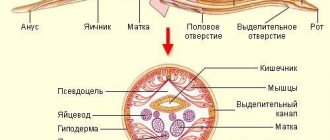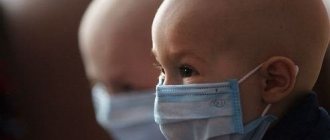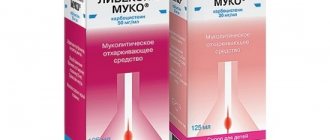The immune system plays the role of protector in our body from the penetration of foreign viruses, bacteria, fungi and other parasites. A condition in which the immune system fails for various reasons, and these disorders of immune defense have a long-term pathological nature, is called immunodeficiency (immunodeficiency state, IDS). In addition, with immunodeficiency, the process of renewal of the body is slowed down or completely stopped.
Immunodeficiencies are divided into:
- primary (hereditary, at the genetic level)
- secondary (acquired during life).
Secondary IDS are much more common than primary ones. Chronic infectious diseases are the main symptom of both types of immunodeficiency.
Symptoms of immunodeficiency.
Symptoms of primary and secondary immunodeficiency have similar manifestations and signs:
- frequent exacerbations of chronic diseases (upper respiratory tract, arthrosis, arthritis, diseases of the gastrointestinal tract, etc.)
- increased susceptibility to various infections
- chronic weakness, depressed mood, fatigue, sweating
- systematically elevated body temperature up to 37.7
- combination of pathologies of different origins in one disease (Bacterial, viral and fungal infections)
- tenderness and enlargement of lymph nodes
- frequent allergic reactions
Secondary immunodeficiency conditions
More common are secondary (acquired) immunodeficiency conditions, which are observed in children who have suffered acute diseases, which then become chronic. Taking certain medications can also provoke secondary IDS.
Secondary immunodeficiency states are characterized by pronounced immunological defects.
The main reasons for the development of acquired (secondary) IDS are:
- uremia;
- metabolic and congenital diseases;
- prematurity of newborns;
- chromosomal abnormalities;
- cytostatics (drugs that prevent cell division);
- infections (HIV, congenital rubella);
- leukemia;
- surgical injuries and interventions;
- hypothermia (hypothermia);
- burn disease.
Secondary immunodeficiency states are characterized by impaired cellular and humoral immunity. Acquired IDS provoke a breakdown of post-vaccination immunity in children.
Secondary immunodeficiencies are not the result of genetic defects: these disorders in the immune system of children develop in the postneonatal period (up to 1 year of life).
The reasons that provoke the development of secondary IDS are:
- errors in the child’s nutrition (imbalance, poor-quality drinking water);
- chronic bacterial and viral infections;
- chemotherapy;
- irrational use of medications;
- exposure to pesticides, radiation;
- surgical operations;
- physical exercise;
- injuries;
- stress.
Secondary IDs are classified into systemic (resulting from damage to immunogenesis) and local (characterized by local disorders of the immune system of the skin, mucous membranes and other tissues).
The following diseases are “characteristic” of secondary immunodeficiency states:
- fungal, viral and bacterial infections;
- disorders in the child’s nutrition (exhaustion, cachexia, etc.);
- tumors (granulomatosis, lymphocytic leukemia);
- diabetes;
- long-term stress.
Diagnosis of immunodeficiency.
The manifestation of signs of primary immunodeficiency occurs immediately after the birth of a child or after a short period of time.
Secondary immunodeficiency can develop at any stage of life.
Diagnosis of immune deficiency includes:
- initial examination of the patient and collection of a complete medical history
- general blood analysis
- blood chemistry
- genetic and immunological tests (for primary immunodeficiency)
- PCR diagnostics
- virological study
Specialists you should contact if you suspect immunodeficiency:
- immunologist
- virologist
- allergist
Treatment of secondary immunodeficiency conditions
Treatment of acquired IDS consists of:
- therapy with various immune drugs (immunoglobulins, as well as antitoxic, anti-influenza and anti-staphylococcal sera);
- correction of immunity with pharmacological drugs (Imuran, Diucefon, Dekaris, etc.) and hormones;
- plasma transfusion;
- use of bone marrow stimulants.
When remission of a secondary immunodeficiency state is achieved, it is necessary to exclude the occurrence of infectious foci in the family; Avoid keeping your child in crowded places; exclude any possible contact with vaccines and allergens; carry out all necessary therapeutic measures only at home; take complexes of microelements and vitamins.
Especially for – Marta Klimchuk
Treatment.
The manifestation of signs of immunodeficiency in children and adolescents indicates a congenital form of the disease, and in an adult – an acquired form.
Treatment of primary immunodeficiency is much more complex and represents a comprehensive approach:
- Establishing an accurate diagnosis with identification of the part of the immune system that has been disrupted.
- Replacement correction of a missing link in the immune system (for example, bone marrow transplantation).
- Administration of immunoglobulins - intravenously or subcutaneously (contraindicated in patients with heart failure).
- Treatment with antibiotics, antifungal or antiviral drugs if infectious complications occur.
Treatment of the second type must begin with identifying and eliminating the cause of its occurrence. Then the immunologist prescribes: antibiotics, immunotherapy and vitamin therapy.
Prevention of primary immunodeficiency conditions
Since the cause of primary IDS is a genetic defect, it is impossible to avoid them using preventive measures, but all necessary measures must be taken to prevent infections, namely:
- undergo courses of preventive antibiotic therapy (take antifungal and antiviral agents);
- it is necessary to take all the vaccines recommended by the doctor on time;
- parents should teach the child to take special care of personal hygiene: take a shower, wash hands thoroughly, brush teeth on time, and try not to damage the gums with a brush;
- you also need to monitor his diet;
- Parents should limit any contact of the child with people with colds, try not to let him be in crowded places.
The immune system has special physiological mechanisms of functioning:
- antigen recognition,
- activation of immunocompetent cells,
- cell proliferation,
- differentiation,
- immunoregulation.
If defects occur in one or more parts of the immune system, this leads to immunodeficiency states .
By origin they distinguish:
- primary (genetically determined),
- secondary (arising in connection with infections, invasions, tumors, aging, burns, injuries, etc.) immunodeficiencies.
Depending on the level of the defect, there are:
- immunodeficiencies caused by predominant damage to the B link;
- immunodeficiencies caused by predominant damage to the T-link;
- combined immunodeficiencies.
There are also immunodeficiencies:
- humoral (most common),
- cellular,
- cellular-humoral.
Deficiency of lymphocytes, macrophages, plasmacytes, granulocytes is a cellular form of immunodeficiency. Deficiency of immunoglobulins (antibodies) is a humoral immunodeficiency.
Primary (congenital) immunodeficiencies . Primary (congenital) immunodeficiencies are based on a genetic defect that can occur at different stages of development of immunocompetent cells - stem cells, stages of differentiation of T and B cells, and during the maturation of plasma cells. The spectrum of chromosomal immunity defects is quite wide - mutations, transcription and translation disorders, genetically determined defects in cell membranes. Particular importance is attached to abnormalities of the short arm of the X chromosome, which is associated with the mechanism of immunoregulation. The Ir (immune response strength) and Is (immune response suppression) genes are linked to the HLA-D region. About a third of primary immunodeficiencies are sex-linked and inherited.
The problem of congenital immunodeficiencies is primarily a pediatric problem; only in recent decades, after the development of methods for diagnosing and treating primary immunodeficiencies, has it become possible to prolong the life of these patients (the problem of opportunistic infections, tumors, etc.). Immunodeficiencies can be associated with a violation of any of the components of immunity (i.e., not only T - and B - lymphocytes, but also macrophages, complement, the main histocompatibility system, interleukins, etc.
The most common immunodeficiencies are caused by:
- disorders of the humoral immunity (hypo- and agammaglobulinemia, etc.;
- dysfunctions of the thymus and cellular immunity;
- disturbances in the phagocytosis system;
- defects of the complement system;
- severe combined disorders.
Main clinical manifestations in primary immunodeficiency conditions.
Common manifestations of immunodeficiencies include:
- infectious syndrome (purulent-septic processes are associated with disorders of predominantly humoral immunity, opportunistic viral, fungal and protozoal diseases are associated with defects in cellular immunity);
- gastrointestinal disorders (malabsorption, IgA deficiency, gastrointestinal tract infections);
- tumors of the immune system;
- allergic and autoimmune syndromes (atopy, autoimmune hemolytic anemia);
- frequent combination with developmental defects (with congenital immunodeficiencies);
hematological changes (decrease in the number of lymphocytes and neutrophils, eosinophilia, anemia, thrombocytopenia).
Immunodeficiency in children
In the treatment of primary immunodeficiency in children, it is important to isolate patients with sources of infection. When infectious exacerbations do not appear, the child can fully communicate with friends and go to educational institutions. It is important that the child does not develop adult bad habits. You need to follow the rules of hygiene when caring for your body.
Children with primary ID with all forms of severe total antibody deficiency and deep cellular immunodeficiency cannot be vaccinated with live vaccines against:
- mumps,
- measles,
- polio,
- tuberculosis,
- chicken pox,
- rubella.
Those who live with a child with primary immunodeficiency can only be vaccinated with inactivated polio vaccine.
Antimicrobial treatment of patients with primary ID consists of prescribing broad-spectrum antibiotics when there is a threat of infection (combined sulfonamides are also effective). If the drug does not quickly produce an effect, it needs to be changed. If there is an effect, it is used for at least 3-4 weeks. Administration of drugs should be intravenous or parenteral. At the same time, antifungal and, if certain indications are available, antiviral, antimycobacterial and antiprotozoal agents are used.
With immunodeficiency, a child may require long-term antimicrobial therapy - for many years or throughout his life.
Treatment of children with immunodeficiency and influenza:
- remantadine
- amantadine
- zanamivir
- neuraminidase inhibitors
- oseltamivir
In case of chickenpox or Herpes simplex, children with primary immunodeficiency are prescribed acyclovir. Parainfluenza is treated with ribavirin. Molluscum contagiosum should be treated with topical cidofovir. Before surgery or dental procedures, your child should take prophylactic antibiotics. Most often, dicloxacillin or amoxicillin is used; 0.5-1.0 grams are needed per day.
Severe primary or secondary T-cell immunodeficiency requires prophylaxis of Pneumocystis carinii pneumonia if the CD4 lymphocyte count is below 200 cells/μL in children over 5 years of age, less than 500 cells/μL from 2 to 5 years, less than 750 cells/μL from 1 years up to 2 years and less than 1500 cells/μl for children under 1 year. Trimethoprimsulfomethaxozole is used for prophylaxis.
Correction of immune deficiency in children :
- Replacement therapy
- Immunoreconstruction
- Immunomodulatory therapy
Immunoreconstruction methods are based on transplantation of bone marrow or stem cells obtained from umbilical cord blood. In case of primary immunodeficiency in children, replacement therapy is most often based on the administration of allogeneic immunoglobulin. In recent years, it has been administered intravenously. Such drugs are expensive because the manufacturing technology is very complex. Abroad, in medical practice, subcutaneous infusions of 10-16% immunoglobulin, which was originally recommended for injection into the muscle, are often used.
Primary immunodeficiencies treated with immunoglobulins:
- X-linked and autosomal recessive atammaglobulinemia
- Antibody deficiency syndromes
- Hyper IgM syndrome
- CVID, including deficiency of ICOS, Baff receptors, CD19, TACI
- IgG subclass deficiency with or without IgA deficiency
- Transient infantile hypogammaglobulinemia
- Combined primary immunodeficiency
- Antibody deficiency with normal immunoglobulin levels
Treatment of children with PID with total defects in antibody production
Replacement therapy with immunoglobulin preparations (administered intravenously) plus antibacterial agents is required. In such cases, immunoglobulins are used for therapy once every 3-4 weeks throughout life from the moment of diagnosis. To ensure the prevention of bacterial infections, constant therapy with antibacterial drugs is needed in dosages appropriate to the child’s age.
To treat exacerbations of bacterial infection, parenteral antibacterial therapy with broad-spectrum antibiotics is necessary. For CVID and hyper IgM syndrome, antiviral and antifungal agents are constantly used (they can also be used in courses, the doctor determines this individually). Children with X-linked hyper IgM syndrome require treatment with bone marrow transplantation from an HLA-identical donor.
Treatment of secondary immunodeficiency
Therapy is mainly immunotropic, which is divided into 3 areas:
- replacement treatment (leukocyte mass, immunoglobulins, plasma)
- active immunization
- immunotropic drugs
The choice of immunotropic treatment depends on the severity of the infectious-inflammatory process and the detected immunological defect. Vaccine therapy in these cases has a preventive role and is used only when the symptoms of the disease subside.
For replacement therapy for immunodeficiency in children, intravenous immunoglobulins are used, the main active ingredient of which is specific antibodies, they are obtained from donors. Widely used preparations of intravenous immunoglobulins containing only IgG :
- octagams
- gabriglobin
- intraglobin
Immunotropic treatment of secondary immunodeficiency in children
The effectiveness of antimicrobial treatment can be increased through the simultaneous use of immunomodulators, which are often used to treat secondary immunodeficiency. Immunomodulators should often be combined with etiotropic treatment of the infectious process. Dosage and regimens are prescribed by a doctor; they must comply with the instructions for the drug. If the treatment regimen or medications are ineffective, only a doctor can correct the treatment regimen.
Immunological monitoring is advisable during the use of immunomodulators for children. For the treatment of ID with damage to cells of the monocyte-macrophage system, it is advisable to use galavit, polyoxidonium (azoximer), ribomunil, bronchomunal. For defects in the cellular immunity, the following drugs are effective: taktivin, polyoxidonium, thymalin, thymotene (alpha-glutamyl-tryptophan), imunofan.
In the acute phase of an infectious disease, immunomodulators are used carefully. Cytokines are prescribed only if there is lymphopenia, leukopenia, or low spontaneous activation of neutrophils. Otherwise, they can cause a systemic severe inflammatory response, resulting in septic shock. In such cases, polyoxidonium is safe. It not only has an immunomodulatory effect, but also has antioxidant and detoxifying properties.
Immunostimulants for the treatment of immunodeficiency in children
Among systemic immunomodulators, interferon inducer drugs, Lavomax tablets, are effective. Their active ingredient is tilorone 0.125 g. It activates cellular immune mechanisms. The synthesis of interferons when Lavomax is administered in the blood is determined 20-24 hours after taking the drug. Dosage regimen: the first two days, 1 tablet, then 1 tablet every other day. The dose per course for children is 10-20 tablets.
Pathological physiology
Among the immunodeficiencies of this group, three forms are distinguished: with damage to T-lymphocytes; with damage to B lymphocytes; combined immunodeficiencies. in which both T and B lymphocytes are affected.
Currently, 17 types of immunodeficiency states have been identified, characterized by different pathogenetic bases and, accordingly, different clinics. As an example, let's consider combined immunodeficiencies, which are the most severe form of damage to the body's immune defense system.
Combined immunodeficiencies are the most profound defects in the cells of the immune system. Patients suffering from them have neither T- nor B-lymphocytes. They are transmitted by autosomal recessive and X-linked recessive inheritance.
In such patients, already in the first months of life, persistent lung infection, chronic diarrhea, exhaustion and growth retardation are noted. These symptoms progress, do not respond to any treatment, and after one or two years of life such children die. In these children, examination usually does not reveal tonsils, lymph nodes are extremely small or absent, and the content of lymphocytes in the blood is usually reduced. as a rule, the level of immunoglobulins is sharply reduced. Accordingly, the production of antibodies in the body is either sharply suppressed or even completely stopped.
Other immunodeficiency states are much more mild, but the patient faces the threat of death from an infection throughout his life, which in a normal person can usually cause only mild illness.
Treatment of immunodeficiencies comes down mainly to two effects: chronic administration of immune globulins into the body, which is essentially replacement therapy and is effective only until the administration of immunoglobulins stops, and transplantation of immunocompetent organs - bone marrow and thymus. Like any other transplantation, this method encounters a barrier of tissue incompatibility and graft rejection, although in patients with immunodeficiencies the level of tissue incompatibility between the donor and recipient is reduced, precisely due to a violation of the immune defense. But in any case, the success of treatment with this method depends on how carefully the transplant was selected in terms of tissue compatibility. A method has now been developed for transplanting thymus and sternum taken from a stillborn child into a patient with immunodeficiency. The advantage of this operation over others lies, firstly, in the fact that the producers of both T-lymphocytes (thymus) and B-lymphocytes (bone marrow of the sternum) are immediately transplanted, secondly, in the anatomical similarity of these two organs, and, thirdly, due to the fact that embryonic tissues take root more easily in the recipient.












